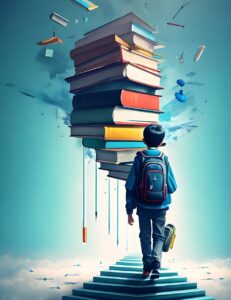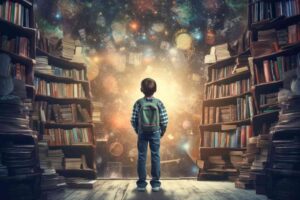Inclusive Education: Changemakers Breaking Down Barriers to Learning
The importance of inclusive education is that all students are given equal learning chances, as well as achievement.
It can also contribute to increased social justice, toward a more diverse and equitable society.
In the realm of inclusion, the every day is extraordinarily unique.
Nowadays, learning serves not as a barrier to academic knowledge but as an entry to creation and creativity.
However, let us look at the agents of change â the change makers.
These people are reinventing education with an open environment and creating an atmosphere where every learner grows.
Letâs shift our attention to inclusive education where diversity is seen in a positive light.
We anticipate something that will revolutionize education itself.

The Global Education Landscape
The world of education is a complex and dynamic field.
Quality education remains an unresolved problem in many countries around the world.
Expectedly, 260 million children and adolescents left school in 2019.In total, there were 61 million primary school children and 63 million secondary school children among them.
Different elements contribute to the global education crisis. Some of them are poverty, conflict, displacement, discrimination, and lack of resources. The majority of schools in developing countries have to be sufficiently staffed and financed.
Classrooms could be overcrowded. They should therefore be more qualified and trained. This may pose challenges to studentsâ learning.
The global education crisis has several negative consequences. It deprives children and teenagers of an opportunity to receive formal education and attain their full potential. It also makes poverty and inequality stronger.
Several measures can be taken to address the global education crisis.
For instance, the investment in education enhances the quality of the teaching and reduces the disparities in education.
It is also important to address the underlying factors of the crisis, including poverty, hostilities, and prejudice.
Cooperation allows an environment in which all children and adolescents receive a world-class education.
Identifying Barriers to Learning
Here are some barriers to learning:
- Gender inequality
Gender norms that prioritize boys’ education over girls’ and child marriage can affect girls’ education.
Cultural beliefs and long distances to schools can also contribute to gender inequality. - Lack of infrastructure
There needs to be more infrastructure to ensure student attendance and performance.
Students may miss school due to a lack of facilities, and those who attend may need help learning in overcrowded, poorly lit, and inadequately ventilated classrooms. - Economic constraints
Economic constraints are one example of external variables that restrict the freedom of action of the business.
Such factors are normally beyond the control of the business.
This is because many marginalized groups face challenges that may impede their access to education. The economic, cultural, social, and political barriers.
Nevertheless, several measures can be taken to enhance access to education for marginalized communities such as increased funding for education to marginalized communities, scholarships and financial aid to learners from marginalized communities, and tackling stereotypes and discrimination in the education system.
Changemakers in Education
Changemakers in education are enthusiastic advocates for creating an education system that will be inclusive and accessible to everyone.
They address such issues at their roots such as poverty and discrimination.
For instance,
- Ashoka U, an international network promoting social innovation in broader education, It aims to promote social innovation in higher education.
- Similarly, History Retold is a student-led initiative, that tackles Eurocentric history narratives, defeating stereotypes, and cultivates a more elaborated interpretation.
- Another changemaker Zoya is empowering educators to provide a more accommodating curriculum.
- Madav Chavan and Farida lambay founder of Pratham Education Foundation which which aims to provide education to children across the country.
- Mahesh Jadhav founder of Mahesh Foundation have supported thousands of underprivileged and provided skill based education to them.
These are only a few drops in the ocean. Many changemakers around the globe, have broken down barriers, thus building a better, fairer society. With broken walls and new leads, they create a world where everyone can follow the prospect of gaining an education.
Innovative Approaches
There is a need to create a land of innovative solutions where creators produce innovation to be their hidden weapon.
Consider a world in which the usual barriers to learning are eradicated and give way to alternative methods that lead to the reconstruction of education.
This reconstruction is guided by the changemakers and creates a collaborative learning environment.
From online lectures to community-based projects emphasizing diversity, innovation is the engine of educational reform.
It relates to the adaptability and success of those who see the need to change education â a field in which innovation is more than a catchphrase.
Innovation feeds future forces that can break free from the chains of learning.
Here are some innovative approaches:
- Flipped Classrooms: This teaching method involves a change in the arrangement of when instructional content is delivered and the interaction between teachers and students.
- Using AI in education: Educators can use AI to personalize the learning experience of students, offer more efficient and effective teaching methods, and provide more accurate assessments.
Prepare to be inspired by the various possibilities highlighted by these dynamic innovators.

Government and Policy Initiatives
Policies from the government are important for inclusive education. All students should have equal access to education on the grounds of their background or competency.
Some proven policies and reforms to promote fair learning should be adopted by different governments such as:
- Financial Assistance: Financial aid or scholarships can be a solution to the financial barriers that some underprivileged students face and keep them from attending school.
- Supplementary Studies: Students from various backgrounds should feel welcomed and comfortable in a classroom with an inclusive curriculum that reflects their experiences and needs.
- Teacher Training: If teachers are trained in how to create inclusive learning environments, they can also meet the needs of all students.
- Special educational activities: Students with disabilities can achieve their full potential when provided with special education services.
- Anti-discrimination policies: Adopting anti-discrimination policies can lead to a no-bullying zone in schools.
Besides these specific policies and reforms, governments can advance inclusive education by securing a more inclusive society.
This entails dealing with the plight of poverty, inequality, and discrimination that deny students a quality education.
Using appropriate government programs and policies, we will have an inclusive education system whereby all students can perform well.
Future Directions
If learning becomes an exciting journey, the future is bright. With technology as your new best friend, classrooms are bursting with energy as lessons come to life.
Letâs imagine a world in which students around the world share their beliefs and knowledge, making it a global celebration of education.
However, that is only possible if superheroes of inclusive education promote the cause globally.
These heroes don’t wear capes. They are torchbearers of a child’s right to quality education.
These heroes can be anyone; a large organization, an NGO, a corporate company, a school, a teacher, or simply a common man who has realized the power of education and wants to make an impact.
If done rightly, the future is vivid, daring, and brimming with opportunity.
Letâs Recall
At the end of this article, letâs appreciate those heroesâour changemakersâwho prepare the path for inclusive education.
Thanks to their efforts, education was transformed from a privilege to a right of all mankind.
With this chapter closing, recall that the path to inclusive education is a collaborative journey.
Every stride, every lesson taught, is a victory in humanity.
Letâs fight this battle together so that the torch of education burns bright for all, illuminating a path where learning has no limits.Letâs UPDEED!
Ready to make a positive impact in the world?
UPDEED is the place for you. Our free and open platform is filled with inspiring stories from individuals and organizations who are making a difference in their communities and beyond. Connect and collaborate with like-minded individuals from around the globe on UPDEED, and discover your own potential to create meaningful change. Join our community and make a difference.Â





